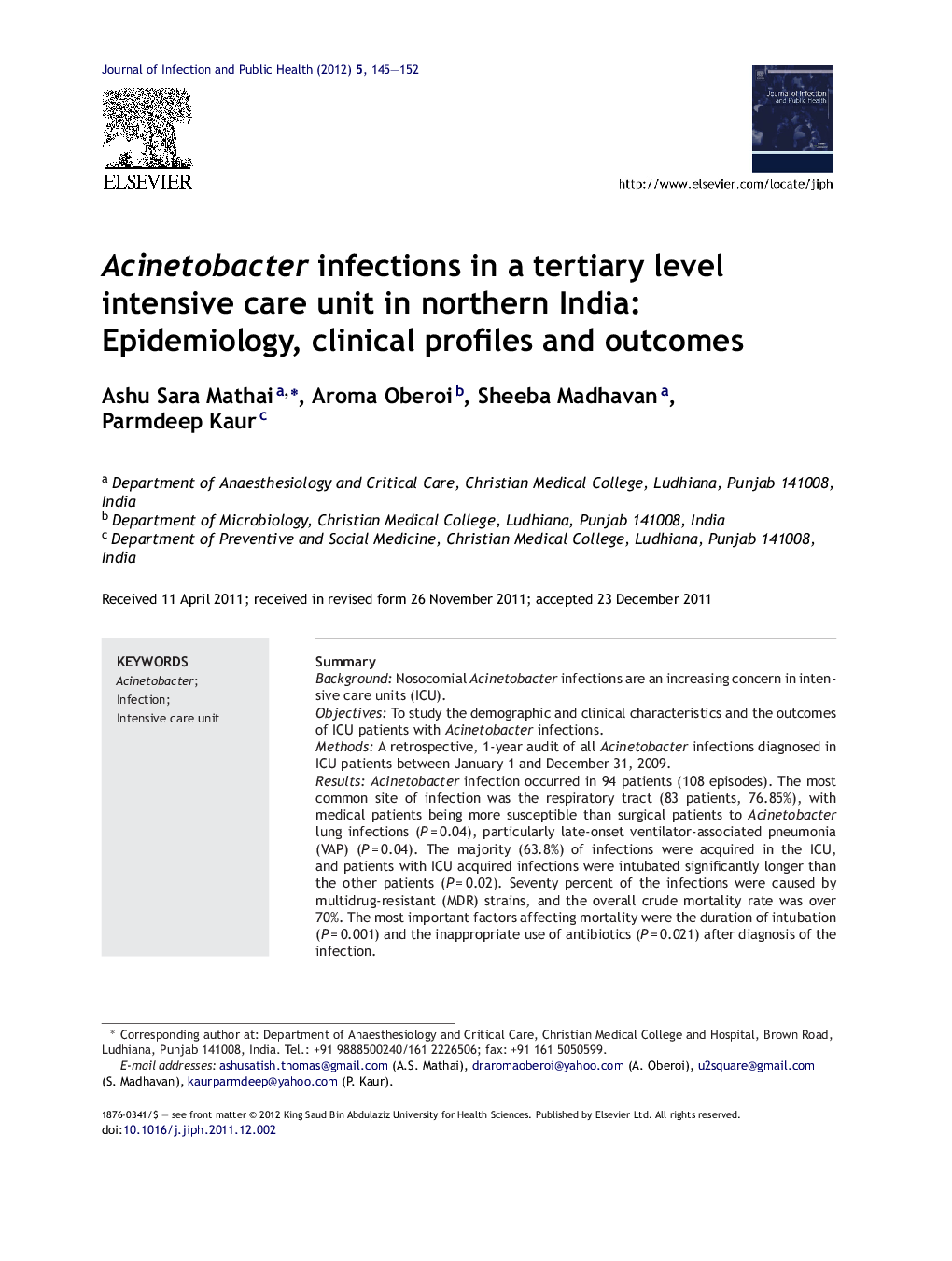| Article ID | Journal | Published Year | Pages | File Type |
|---|---|---|---|---|
| 3405959 | Journal of Infection and Public Health | 2012 | 8 Pages |
SummaryBackgroundNosocomial Acinetobacter infections are an increasing concern in intensive care units (ICU).ObjectivesTo study the demographic and clinical characteristics and the outcomes of ICU patients with Acinetobacter infections.MethodsA retrospective, 1-year audit of all Acinetobacter infections diagnosed in ICU patients between January 1 and December 31, 2009.ResultsAcinetobacter infection occurred in 94 patients (108 episodes). The most common site of infection was the respiratory tract (83 patients, 76.85%), with medical patients being more susceptible than surgical patients to Acinetobacter lung infections (P = 0.04), particularly late-onset ventilator-associated pneumonia (VAP) (P = 0.04). The majority (63.8%) of infections were acquired in the ICU, and patients with ICU acquired infections were intubated significantly longer than the other patients (P = 0.02). Seventy percent of the infections were caused by multidrug-resistant (MDR) strains, and the overall crude mortality rate was over 70%. The most important factors affecting mortality were the duration of intubation (P = 0.001) and the inappropriate use of antibiotics (P = 0.021) after diagnosis of the infection.ConclusionsAcinetobacter infections are highly prevalent in the ICU, with medical patients being more susceptible to lung infections, particularly late-onset VAP. The early and appropriate selection of antibiotics is the most important determinant of survival among these patients.
► We retrospectively reviewed all patients infected with Acinetobacter infection. ► Acinetobacter pneumonia infects medical patients more than surgical. ► Multidrug resistant pathogens caused a majority of the ICU acquired infections. ► Inappropriate antibiotic selection was the most important determinant of mortality.
